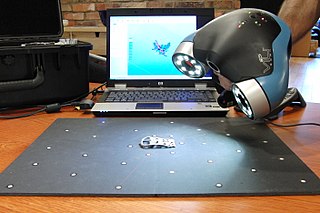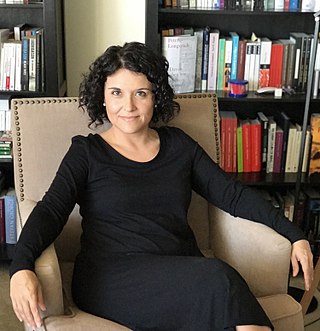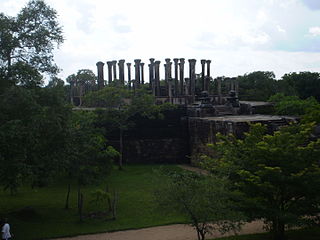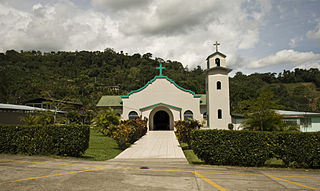
Underwater archaeology is archaeology practiced underwater. As with all other branches of archaeology, it evolved from its roots in pre-history and in the classical era to include sites from the historical and industrial eras. Its acceptance has been a relatively late development due to the difficulties of accessing and working underwater sites, and because the application of archaeology to underwater sites initially emerged from the skills and tools developed by shipwreck salvagers. As a result, underwater archaeology initially struggled to establish itself as actual archaeological research. This changed when universities began teaching the subject and a theoretical and practical base for the sub-discipline was firmly established in the late 1980s. Underwater archaeology now has a number of branches including, maritime archaeology: the scientifically based study of past human life, behaviours and cultures and their activities in, on, around and (lately) under the sea, estuaries and rivers. This is most often effected using the physical remains found in, around or under salt or fresh water or buried beneath water-logged sediment. In recent years, the study of submerged WWII sites and of submerged aircraft in the form of underwater aviation archaeology have also emerged as bona fide activity.

Chavín de Huántar is an archaeological site in Peru, containing ruins and artifacts constructed as early as 1200 BC, and occupied until around 400–500 BC by the Chavín, a major pre-Inca culture. The site is located in the Ancash Region, 434 kilometers (270 mi) north of Lima, at an elevation of 3,180 meters (10,430 ft), east of the Cordillera Blanca at the start of the Conchucos Valley.

Kilwa Kisiwani is an island, national historic site, and hamlet community located in the township of Kilwa Masoko, the district seat of Kilwa District in the Tanzanian region of Lindi Region in southern Tanzania. Kilwa Kisiwani is the largest of the nine hamlets in the town Kilwa Masoko and is also the least populated hamlet in the township with less than 1,000 residents.

3D scanning is the process of analyzing a real-world object or environment to collect three dimensional data of its shape and possibly its appearance. The collected data can then be used to construct digital 3D models.

Cultural heritage is the heritage of tangible and intangible heritage assets of a group or society that is inherited from past generations. Not all heritages of past generations are "heritage"; rather, heritage is a product of selection by society.
CyArk is a 501(c)(3) nonprofit organization located in Oakland, California, United States founded in 2003. CyArk's mission is to "digitally record, archive and share the world's most significant cultural heritage and ensure that these places continue to inspire wonder and curiosity for decades to come."

The Zamani Project is part of the African Cultural Heritage Sites and Landscapes Database. Zamani is a research group at the University of Cape Town, which acquires, models, presents and manages spatial and other data from cultural heritage sites. The present focus of the Zamani project is Africa, with the principal objective of developing “The African Cultural Heritage Sites and Landscapes Database”. Zamani comes from the Swahili phrase “Hapo zamani za kale” which means “Once upon a time”, and can be used to mean 'the past'. The word is derived from Arabic root for temporal vocabulary, ‘Zaman,’ and appears in several languages around the world.

Quantapoint, Inc. is a technology and services company that develops and uses patented 3D laser scanning hardware and software. Quantapoint creates a Digital Facility using 3D laser scanning and then provides visualization, analysis, quality control, decision support and documentation services for buildings, museums, refineries, chemical plants, nuclear and fossil-fuel power plants, offshore platforms and other structures.

The Slave Route Project is a UNESCO initiative that was officially launched in 1994 in Ouidah, Benin. It is rooted in the mandate of the organization, which believes that ignorance or concealment of major historical events constitutes an obstacle to mutual understanding, reconciliation and cooperation among peoples. The project breaks the silence surrounding the slave trade and slavery that has affected all continents and caused great upheavals that have shaped our modern societies. In studying the causes, the modalities and the consequences of slavery and the slave trade, the project seeks to enhance the understanding of diverse histories and heritages stemming from this global tragedy.
Sustainable Archaeology (SA) is a digital archaeological research facility and collections repository that advances a sustainable form of practice and research archaeology in Ontario. Sustainable Archaeology is an inter-institutional collaborative research facility between the University of Western Ontario (Western) and McMaster University.
Barbara J. Heath is a professor in the Department of Anthropology at The University of Tennessee, Knoxville who specializes in historical archaeology of eastern North America and the Caribbean. Her research and teaching focus on the archaeology of the African diaspora, colonialism, historic landscapes, material culture, public archaeology and interpretation, and Thomas Jefferson.

Musawwarat es-Sufra, also known as Al-Musawarat Al-Sufra, is a large Meroitic temple complex in modern Sudan, dating back to the early Meroitic period of the 3rd century BC. It is located in a large basin surrounded by low sandstone hills in the western Butana, 180 km northeast of Khartoum, 20 km north of Naqa and approximately 25 km south-east of the Nile. Its MGRS coordinates: 36QWD3477214671. With Meroë and Naqa it is known as the Island of Meroe, and was listed as a UNESCO World Heritage Site in 2011. Constructed in sandstone, the main features of the site include the Great Enclosure, the Lion Temple of Apedemak and the Great Reservoir. Most significant is the number of representations of elephants, suggesting that this animal played an important role at Musawwarat es-Sufra.

Songo Mnara is a historic Swahiili settlement in located on Songo Mnara Island in Pande Mikoma, Kilwa District in Lindi Region of Tanzania. The island is home to a Medieval Swahili stone town. The stone town was occupied from the 14th to 16th centuries. Songo Mnara has been recognized as a UNESCO World Heritage Site, along with nearby stone town Kilwa Kisiwani. In total, archaeologists have found six mosques, four cemeteries, and two dozen house blocks along with three enclosed open spaces on the island. Songo Mnara was constructed from rough-coral and mortar. This stonetown was built as one of many trade towns on the Indian Ocean. The site is a registered National Historic Site.

Ana Lucia Araujo is an American historian, art historian, author, and professor of history at Howard University. She is a member of the International Scientific Committee of the UNESCO Slave Route Project. Her scholarship focuses on the transnational history, public memory, visual culture, and heritage of slavery and the Atlantic slave trade.
Digital heritage is the use of digital media in the service of understanding and preserving cultural or natural heritage.

Medirigiriya is a town located in Polonnaruwa District in North Central Province, Sri Lanka. The elevation of the town is 61 m (200 ft). The famous archaeological site of Medirigiriya Vatadage is located about 1 km (0.62 mi) from the town centre.
The Thomas Jefferson Foundation, originally known as the Thomas Jefferson Memorial Foundation, is a private, nonprofit 501(c)(3) corporation founded in 1923 to purchase and maintain Monticello, the primary plantation of Thomas Jefferson, the third president of the United States. The Foundation's initial focus was on architectural preservation, with the goal of restoring Monticello as close to its original appearance as possible. It has since grown to include other historic and cultural pursuits and programs such as its Annual Independence Day Celebration and Naturalization Ceremony. It also publishes and provides a center for scholarship on Jefferson and his era.

Biete Maryam is one of the monolithic rock-cut Rock-Hewn Churches, Lalibela of the Ethiopian Orthodox Tewahedo Church. It is part of the UNESCO World Heritage Site at Lalibela.

Rivas is a district of the Pérez Zeledón canton, in the San José province of Costa Rica.
Stewart Castle was a large sugar plantation in Trelawney Parish, Jamaica. It was established in 1754 by local planter James Stewart. It was inherited by his son, known as James Stewart II, who mortgaged the estate in 1799.













